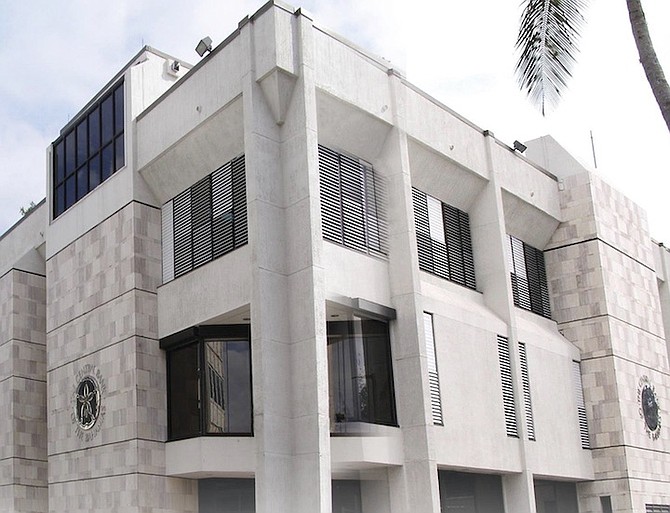By NEIL HARTNELL
Tribune Business Editor
nhartnell@tribunemedia.net
The Central Bank yesterday forecast that “inflationary pressures will remain contained” while The Bahamas’ foreign currency reserves will close 2022 above “international benchmarks”.
Using language that might surprise many Bahamians, given rising food prices and cost increases for other essential products during early 2022, the regulator acknowledged that “some firming” in inflation was unavoidable given external forces that have been exacerbated by Russia’s invasion of Ukraine.
“With regard to prices, inflationary pressures are anticipated to remain contained, although some firming is forecasted, as a result of the rise in international oil prices, increased costs on other imported goods as a result of supply chain shortages, and geopolitical tensions in eastern Europe,” the Central Bank said in its monthly economic report for January 2022.
The Central Bank’s measured assessment on inflation many not match the daily experiences of many Bahamians, who are already feeling price increases cut into the spending power and living standards.
And it contrasts with a recent statement by Walter Ferguson, the Consumer Protection Commissioner, who said: “One of the biggest challenges in our country is that more than 90 percent of our goods are imported. Due to the supply chain disruptions, bad weather, staff and trucking issues in our number one source market, the US, our prices will rise.
“Inflation has hit the US by 7 percent, so you can only imagine what is going to happen here in The Bahamas. We are looking at staggering price increases. There is no way, at this time, to control this global environment. What we will have to do as Bahamians is buckle our belts, tighten up and buy what is needed more than what is wanted.”
John Rolle, the Central Bank’s governor, earlier this year said global inflation and its impact on The Bahamas, given that the country imports all it consumes, represented a potential headwind to the economy’s post-COVID rebound.
Meanwhile, the Central Bank forecast that The Bahamas’ foreign currency reserves will have little difficulty supporting the country’s fixed exchange rate peg with the US dollar throughout 2022.
“External reserve balances are anticipated to remain buoyant over the course of the year, bolstered by expected foreign currency inflows from the tourism sector and other net private sector receipts, thus ending 2022 above the international benchmark, [and] remaining more than adequate to sustain the Bahamian dollar currency peg,” it said.
The external reserves stood at $2.417bn at end-January 2022, nearly $100m higher than at the same point a year earlier. The drawdown on the reserves was also less this year, standing at $41.7m compared to $60.72m in January 2021.
“Underlying this outturn, the Central Bank’s transactions with commercial banks switched to a net purchase of $48.2m vis-à-vis a net sale of $32.8m in the preceding year,” the regulator added.
“Further, commercial banks’ net intake from customers broadened to $73.7m from just $4.6m in the same period of the previous year. Meanwhile, the Central Bank’s net sale to the public sector widened to $89.2m from $29.9m a year earlier.”
And, with the economy continuing to re-open as The Bahamas continues to recover from the COVID-19 pandemic, the Central Bank said: “Provisional data on foreign currency sales for current account transactions for the month of January revealed a $218.1m expansion in outflows to $556.2m vis-à-vis the same period of the preceding year, reflecting growth across almost all categories.
“Specifically, ‘other’ current items moved higher by $97.3m, largely reflecting a rise in credit and debit card transactions, while non-oil imports and oil imports rose by $51.6m and by $44.1m, respectively. Likewise, factor income payments grew by $23.4m and travel-related transactions by $3.2m. Providing a modest offset, foreign currency sales for transfer payments decreased by $1.5m.”
But, while Bahamian dollar credit growth rose to $73.5m compared to $20.7m in January 2021, the Central Bank report revealed that this was driven solely by the Government’s borrowing activities.
“The fall-off in private sector credit moderated to $5.9m from $10.9m in 2021, as the growth in commercial credit quickened to $10.7m from $4.8m a year earlier. In addition, the reduction in mortgages slowed to $4.8m from $5.4m in the prior year,” the Central Bank added. “However, the decrease in consumer credit extended to $11.8m from $10.3m in the previous year.
As for the commercial banking industry’s loan quality, the sector’s regulator reported a minor increase in arrears which now total more than $785m. “Total private sector arrears rose by $5.3m (0.7 percent) to $785.1m, elevating the attendant ratio by 13 basis points to 14.4 percent,” the Central Bank said.
“Disaggregated by the average age of delinquency, non-performing loans grew by $7m (1.3 percent) to $534.9m, resulting in the accompanying ratio moving higher by 15 basis points to 9.8 percent, with increases in the non-performing loan rates for consumer loans by 29 basis points to 10.2 percent; mortgages by seven basis points to 11 percent; and commercial loans by seven basis points to 5.4 percent.
“In contrast, short-term arrears (31-90 days) declined by $1.7m (0.7 percent) to $250.1m with the associated ratio narrowing by two basis points to 4.6 percent. A breakdown by loan type revealed that consumer arrears increased by $8.5m (3.2 percent) to $278.5m, as both the long and short-term components rose by $4.7m (2.3 percent) and by $3.8m (5.6 percent), respectively,” it added.
“Likewise, mortgage delinquencies grew by $5.2m (1.2 percent) to $443.6m, with the short-term segment increasing by $3.6m (2.2 percent), while the non-accruals category moved higher by $1.6m (0.6 percent).
“Conversely, commercial loan arrears fell by $8.4m (11.8 percent) to $63m owing to a $9.1m (38.3 percent) reduction in the short-term segment, as opposed to the $0.7m (1.5 percent) uptick in non-performing loans.”





Comments
Use the comment form below to begin a discussion about this content.
Sign in to comment
Or login with:
OpenID